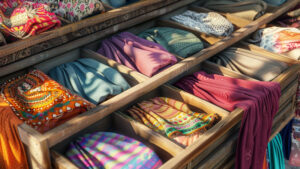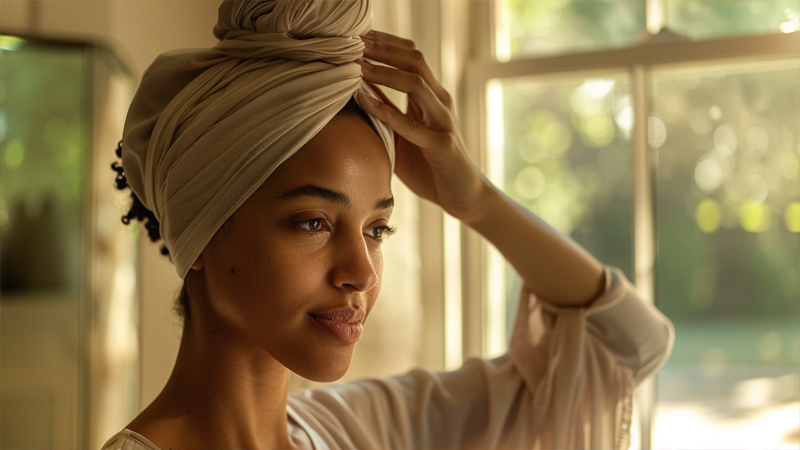
I once tied a head scarf in a rush and felt instantly more put-together.
Head scarf wraps come in a variety of traditional and modern styles, each suited to different needs and hair types.
It’s surprisingly easy to explore them all.
What traditional wrap styles are commonly used?
Some wraps trace back generations, reflecting cultural roots and timeless beauty.
Traditional wraps often feature intricate tying methods and ceremonial significance, making them iconic in many communities.

When I first discovered traditional wraps1, I was fascinated by the stories behind them. From the regal African gele to the ornate turbans found across the Middle East, these wraps aren’t just about fashion—they represent heritage, respect, and identity. The intricate folds can signal status, celebrate milestones, or even mark religious events. Some of my friends have shared how they learned these wrapping techniques from grandparents, passing down wisdom through each twist and tuck of fabric.
I love how traditional wraps often use vibrant materials like wax prints or silk blends2. One friend told me about a wrap she wore for her wedding day. Its bold, gold-threaded design took hours to perfect, yet the result was breathtaking—a statement piece that captured her community’s essence and her personal flair.
Deep Dive: Time-Honored Ties
In many cultures, the process of wrapping is itself a bonding experience. Elders teach younger relatives, explaining why certain knots are reserved for festivals or religious services. Beyond ceremony, these wraps also serve practical purposes. They can protect hair from dust in arid climates or provide warmth in cooler ones. Traditional head scarf wraps also highlight local artistry—some might feature hand-dyed patterns or be woven on traditional looms.
| Common Traditional Wrap Styles | Key Regions/Influences |
|---|---|
| African Gele | Various African cultures |
| Middle Eastern Turban | Middle East & North Africa |
| South Asian Dupatta/Chunni | India, Pakistan, Bangladesh |
| Caribbean Headwraps | Islands & Afro-Caribbean roots |
It’s amazing how something as simple as a piece of fabric can carry so much depth. When I wear a traditional wrap, I feel connected to centuries of craftsmanship and cultural pride. Even if I’m not from that specific heritage, I’m reminded that fashion can be a universal language—bridging history, creativity, and modern expression in one beautiful knot.
How do modern and trendy wraps differ from traditional ones?
Newer wraps often blend global inspiration with everyday practicality.
Modern wraps focus on quick styling, bold prints, and versatile designs suited for casual or chic looks.
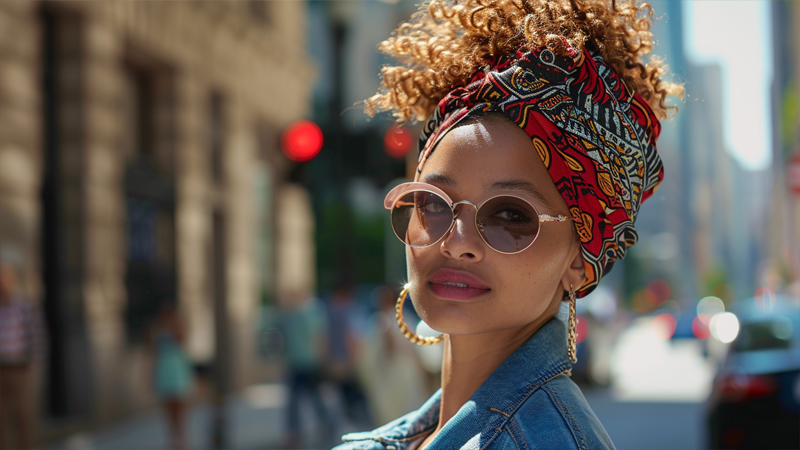
A few years ago, I noticed a surge in “urban turban3” tutorials online. Suddenly, people were embracing bright geometric scarves or edgy abstract prints, and tying them into effortless knots. These modern styles are often less formal, mixing influences from street fashion, social media trends, and cross-cultural mashups. You might see a bohemian bandana worn with a denim jacket one day, and the next day, a sleek satin wrap topping off a cocktail dress.
Going Deeper: Contemporary Flair
One of my favorite aspects of modern wraps is their adaptability. Whether you have short hair, locs, or a fro, you can find a style that works for you. Many contemporary scarves are made from stretchy jersey fabrics4 or light cotton blends, so they’re super comfortable to wear and quick to tie. Some come with pre-sewn loops or elastic, making it easier for beginners. I remember the first time I tried a pre-tied turban; it took me seconds to slip on, and I got compliments all day.
Influencers play a big role in shaping these trends—sharing tips on layering scarves, adding hair accessories like pins or brooches, and pairing wraps with statement earrings. Social media has made it easier than ever to swap ideas and find inspiration worldwide. I’ve seen folks combine vintage scarves with modern pieces, or incorporate interesting textures like lace edges or metallic prints. The result is a vibrant, global tapestry of styles that can be worn to the office, a brunch date, or even a night out dancing.
For anyone hesitant to try a wrap, modern designs might be the perfect gateway. They’re casual enough to experiment with, yet can make a bold fashion statement if you choose bright patterns. Think of them as a canvas for self-expression—one that fits seamlessly into daily routines. So, whether you’re rocking a baseball cap vibe one day or a fashionable turban the next, modern wraps give you the freedom to transition between looks without missing a beat.
What are the functional differences between various wraps?
Some wraps emphasize coverage or warmth, others prioritize style, and a few balance both.
Choose your wrap based on weather, comfort, and how much hair you need to secure.
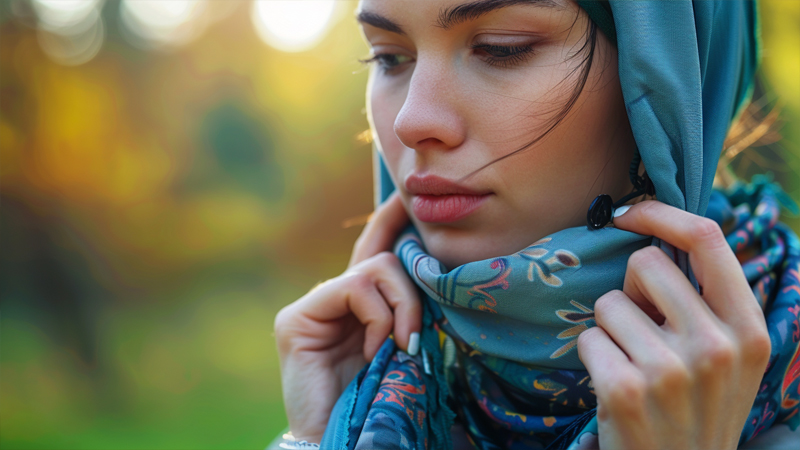
I’ve gone through different phases with wraps—sometimes I need a headscarf to protect my freshly styled hair from humidity5, while other times, I want a cozy turban on a chilly morning walk. Each type has a distinct role. Traditional wraps might be heavier and more decorative, perfect for celebratory events. Modern wraps can be super lightweight for casual, everyday wear. And then there are practical scarves made from moisture-wicking materials6—ideal for workouts or hot climates.
In-Depth: Function Meets Fashion
When selecting a head scarf, I usually consider the season and the situation. Cotton-based wraps breathe well, making them my go-to in hot weather. For cooler days, thicker fabrics or layered turban styles keep my head warm without needing a beanie. If I’m traveling, a large wrap can double as a makeshift shawl—especially on chilly airplanes or when exploring windy city streets.
Another factor is how much hair you have to contain. If you have long braids or locs, you’ll want a wrap that offers enough fabric to tuck everything in neatly. Certain turbans or headscarves come in larger sizes specifically for that purpose. On the flip side, a simpler wrap might suffice if you have short hair or just need a quick fix. Also, consider the wrap’s length—some styles work best with rectangular scarves, while others require a square piece that can be folded into a triangle.
It’s fun to experiment with these functional variations. A sporty wrap might feature an elastic band to keep it from slipping during a run, while a fancy wrap could have sparkly embellishments for a night out. The trick is to think about your day’s activities, your hair situation, and how comfortable you want to be. If you love switching up your look, you might invest in a couple of different options—some for practical errands, some for show-stopping events, and maybe a middle-ground piece that can do a bit of both. Over time, you’ll discover which wraps align with your lifestyle, giving you the best combination of protection, warmth, and style.
How do you choose the right wrap for your hair type?
Match fabric and size to your hair’s length, texture, and volume.
A snug but breathable wrap keeps delicate strands in place without tugging or breaking.
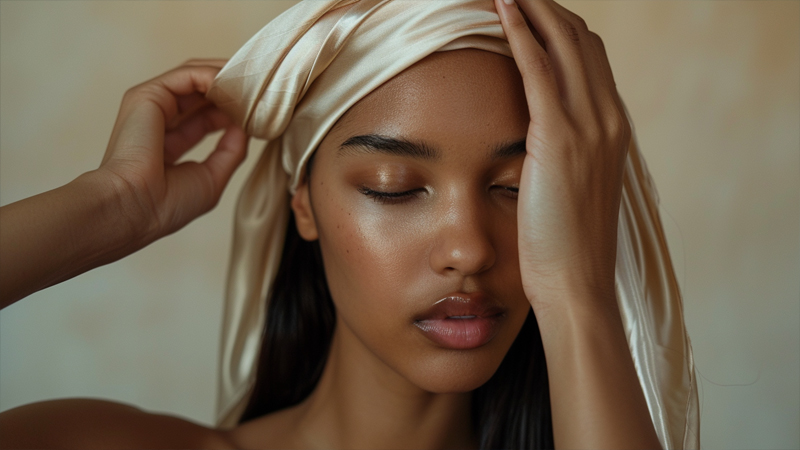
When I had short hair, I loved smaller scarves that didn’t swamp my head. A simple bandana or half-size square was enough to keep everything tucked neatly, and it felt comfortable throughout the day. After I grew my hair out, I realized I needed wraps with more fabric. Otherwise, my hair would peek out from the sides, or I’d have to re-tie it too often.
Deep Look: Wraps That Suit Your Strands
Think about your hair’s texture. If it’s sleek and straight, a silk or satin wrap7 can help reduce friction that causes breakage. Textured or curly hair might benefit from these materials, too, because they’re gentler on curls. Cotton and linen can be great for everyday wear if you want breathability, but they can also create friction, so you might layer a satin bonnet underneath.
Length matters. Longer hair may require a wrap wide enough to hold a bun or ponytail without extra pulling. Meanwhile, shorter hair is often simpler to manage—you can use smaller pieces, or even tie decorative knots in the front for a retro vibe. Another pro tip: consider wrap thickness8. Thick, bulky wraps can weigh down fine hair or flatten it out, while heavier hair might need that extra heft for stability.
It’s also about the tension level. You want the wrap to be snug enough to stay on but not so tight that you’re left with a headache. If you sense scalp pain after a few hours, loosen your knot or choose a wrap with a bit more stretch. Over time, you’ll find what feels best for your hair type—helping you avoid unnecessary breakage or those dreaded indent marks. The right wrap is like a protective friend, gently cradling your hair while adding a stylish accent to your overall look.
Conclusion
Head scarf wraps let me mix tradition, function, and personal style—giving my hair the protection and flair it deserves.
-
Exploring the cultural significances of traditional wraps can deepen your understanding of their ceremonial importance and the stories they carry across generations. ↩
-
Discovering the use of vibrant materials in traditional wraps can enhance your appreciation for the aesthetic and cultural value they add to these garments. ↩
-
Explore the latest trends in urban turban styles to stay ahead in fashion and find versatile, stylish options for any occasion. ↩
-
Discover why stretchy jersey fabrics are a top choice for modern wraps, offering comfort, ease of use, and stylish versatility. ↩
-
Discover top-rated headscarves designed to shield your hair from humidity, ensuring your style stays intact all day. ↩
-
Explore headscarves crafted from moisture-wicking fabrics, perfect for staying cool and comfortable during workouts or in hot climates. ↩
-
Discover how silk or satin wraps can protect your hair from breakage and maintain its health, especially for sleek and straight hair types. ↩
-
Explore the importance of choosing the right wrap thickness to avoid weighing down fine hair or flattening it, ensuring your hair stays healthy and stylish. ↩



